|
|
Browsing this Thread:
1 Anonymous Users
|
|
Datsun Saves — saved me from a mugging |
|
Moderator  
Joined:
2001/5/3 7:04
From 48 North
Group:
Registered Users
Contentmaster
Usermaster
|
Fascinating article about the Datsun 610 of our old friend Bryan "Mr. B210 Honeybee" ThompsonYou'd restore a Datsun 610 too if it saved you from a muggingSaves gas, sure. But this 1975 Datsun 610 earned itself a full restoration by delivering its owner from evilBy Jeff Koch from June 2021 issue of Hemmings Classic Car magazine Photography by Jeff Koch Quote: 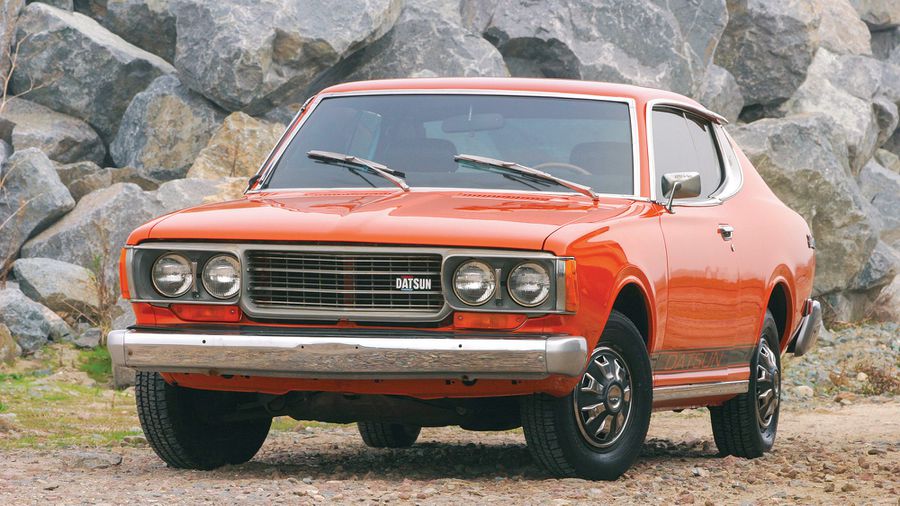
When the American arm of Nissan launched its "Datsun Saves!" ad campaign at around the same time as the Middle East stuck a cork in its oil spigots in late '73, we're pretty sure the company meant that its cheap-to-buy and cheap-to-run vehicles saved fuel and other natural resources. But life itself?
Ask Bryan Thompson. "That car saved my life," he tells us. Now residing in West Hollywood, California, in 1998, Bryan was matriculating at the College of Creative Studies in Detroit. "One day I got mugged in a Detroit suburb, and was chased back to my car by some big dude trying to take my money. I jumped in, and I said, 'Robes Pierre [the name he bestowed upon his Datsun 610], if you start and get me out of here, I'll give you a full restoration when I can afford it.' The window was down; the mugger reached in and grabbed me as I was sitting in the car. And for the first time ever, I turned the key and that Datsun started immediately. I took off, with his arm caught on the pillar, and eventually he spun around and fell down. And I thought, 'That's it! You're getting a full restoration.'"

A Datsun 610 was a curious choice for a car then; even now, in the middle of a full-fledged vintage Japanese-car boom in the collector-car world, the Datsun 610 isn't on most top-10 (20? 40?) lists of vintage Japanese cars to lust after, pick up on the cheap, and fix up. In a list of favorite '70s Datsuns, the ranks would be dominated by Z-cars and the 510—sold as the Bluebird in Japan—but the ZX and pickups would also make the list. Fans who keep their eye on Nissans that never made it to the States would surely also look toward a few generations of Skyline. But the 610?
Yet the 610 was the car that pointed Datsun forward in this country. Until its arrival in the fall of 1972, Datsun enjoyed a cheap-and-cheerful approach, its cars solidly built and achieving a cult reputation through motorsports. Witness the brand's success on the world stage with its succession of rally cars, and on America's road-racing circuits with Peter Brock's team winning races on the West Coast and Bob Sharp grabbing laurels for Datsun in the East. But in 1972, high performance was coming to a screeching halt in this country: Emissions controls meant lower compression ratios and an array of tacked-on smog gear to help clean the air, while bumper laws would soon add weight and ungainly lines to the ends of every car sold Stateside. In an American car that depended largely on torque to shuffle around town, the power drain was less noticeable, but in smaller-engined cars, which needed to rev to maximize their power, the dream of performance got more difficult with each dropped compression point and every additional pound added as the '70s rolled on.

Sensing a sea change, Datsun sent this car, dubbed 610, to replace the boxy little 510. Both models were sold as Nissan Bluebirds in Japan; the 610 was known in its homeland as the Bluebird-U, a name meant to put emphasis on personalization and comfort. Fully reclining front bucket seats, pleated vinyl upholstery, center console, tinted glass, carpeting, a clock, whitewall tires, power front disc brakes, and fully independent suspension (on coupe and sedan, but not the wagon) all helped underscore Datsun's marketing push in print ads and 30-second TV spots: The 610 was a luxury-economy car. The 610 was only marginally larger than the 510 it replaced—3 inches of wheelbase, 1 inch of track, less than 100 pounds on the scale—but the emphasis had clearly shifted from economy-with-a-side-of-spunk to something a little calmer, and more in keeping with the times. (Surely the quantity of rubber biscuits and bushings helped soften things up a bit also.) The Bluebird, you could say, was spreading its wings.
The earliest 610s used a 1,770-cc version of Datsun's L-series OHC four-cylinder, while models from 1974 to the 610's 1976 demise received a 2-liter engine to help cope with new bumpers (for 1975) that added more than 200 pounds to the far ends of the body. Despite Nissan (and the world) focusing on luxury over performance, the 610 fared admirably in the world of competition: It won its class, and took second overall, in the 1973 East Africa Safari rally. In American road racing, it replaced the 510. Bob Sharp took a 610 to second place in the SCCA B-Sedan championship in 1973 and '74, and in 1976 Elliott Forbes-Robinson piloted a 610 to the SCCA B-Sedan Production championship.

By 1975, a 2-liter version of Nissan's venerable L-series overhead-cam four-cylinder (a bigger version of the 510's powerplant) lived under the 610's hood. This 49-state version, coming out of Florida by way of Tennessee, made 97 horsepower—enough to get the 6.45 x 13-inch rubber, on 13 x 4.5-inch wheels, to chirp on launch were the driver so inclined.
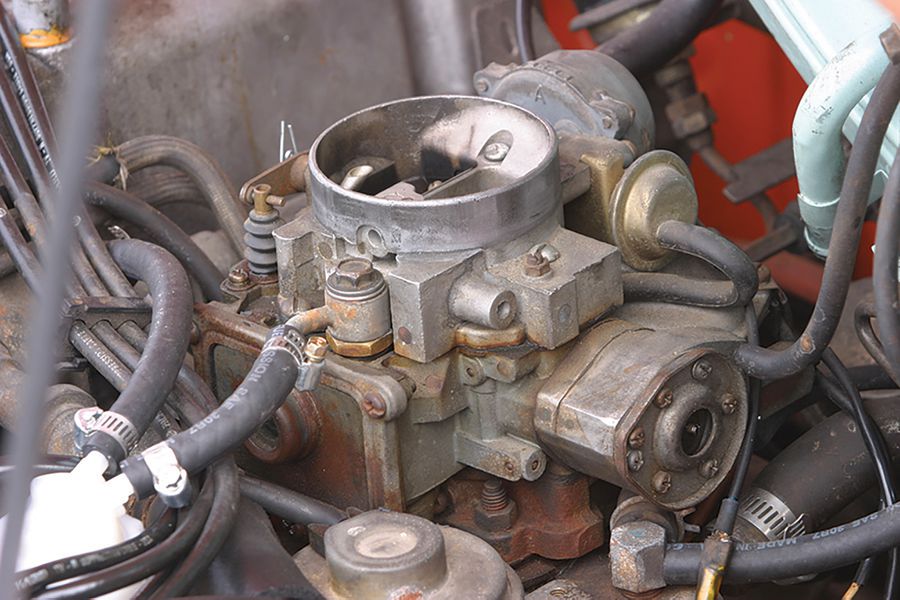
Yet as much as the rock-solid mechanicals were a selling point, the style helped ingratiate Datsun to middle America. Car and Driver described the 610 as a "stylistic blending of Toyota Corolla and Dodge Charger," a comparison that Bryan, now an auto designer by trade, both sees and embraces. "Cars like the 610 had no cultural value [at the time], and no one understood why I liked them. But the Japanese modelers were so capable of these delicate and sophisticated surfaces," Bryan explains. "But that's what attracted me to cars— to break a car down into its design elements and analyze the execution of those elements. I was always fascinated with Japan's interpretation of American muscle car design translated into Japanese economy-car proportions. The 610 is basically a ['71]_Dodge Charger, but the proportions changed, and it became something new. The Japanese at the time would have seen it as a form of flattery. In emulation, they came up with their own aesthetic.
"Nissan designers were inspired by America. Look at America's fuel-crisis era of design: constricted by federal regulations, designers just added stuff. Nissan looked at things and said, let's design for the American market where they're adding luxury touches like landau roofs, animal-grain vinyl, and filigree. But Nissan also looked to add fuel economy—all in a more reliable and economical package."


Bryan worked with a longtime Datsun employee to get the colors and fabrics correct for his restoration; the cloth seating areas were a concession to living in warm southwestern climes without the benefit of air conditioning. The 610's 3 extra inches of wheelbase over the 510 allowed drivers a little more comfort; woodgrain vinyl trim on the dash adds a touch of upscale class.
So when Bryan, visiting family during a late-'90s spring break, found this mechanically-sound but sad-looking orange ex-Tennessee 610 hardtop coupe languishing in a Tampa driveway, he had to save it. He bought it, got it running, drove it back to Detroit from Tampa, and drove it through the rest of his college career and beyond. "In the snow, rear-drive, no ABS, didn't matter," he recalls. The 610 also helped him with his first post-college job, landing at Nissan Design International (NDI) near San Diego.
"So, it's 1999. Renault purchased Nissan. I wrote Jerry Hirshberg [head of NDI] and said I wanted to do a Datsun as my senior thesis. Jerry wrote back and invited me to visit and show my portfolio. Long story short, I was hired before graduation. When Nissan's usual recruiters came to school in Detroit, I was already hired so I wasn't interviewing. Instead, I was asked to pick the recruiters up from the airport in my Datsun! They're used to being driven around in new cars, nice cars! And I drove them around Detroit in my not-yet-restored 610." When Bryan moved to California, he was allowed to ship two cars, so he found a running Renault LeCar. "The two companies merged, so I had one of each [marque]," he reasons. "I alternated driving them to work."
tbc ...
Posted on: 2021/12/4 23:58
Edited by ddgonzal on 2021/12/10 0:34:22
|
|
|
|
|
Re: Datsun Saves — saved me from a mugging |
|
Just can't stay away  
Joined:
2015/7/24 11:39
Group:
Registered Users
|
Interesting story. Enjoyed that.
Posted on: 2021/12/5 1:07
|
|
|
|
|
Re: Datsun Saves — saved me from a mugging |
|
Moderator  
Joined:
2001/5/3 7:04
From 48 North
Group:
Registered Users
Contentmaster
Usermaster
|
story continued ... From https://www.hemmings.com/stories/article/datsun-savesQuote: 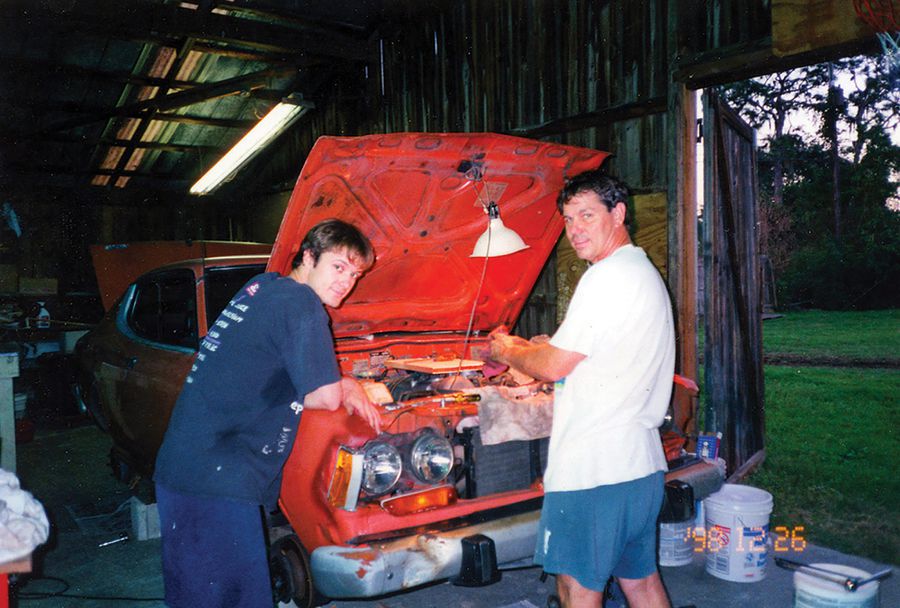
And, following up on his promise from years earlier, Bryan made his 610 like new again. "In truth, it didn't need much— just love. It had all of its original components and just needed to be restored." In the late '90s and early 2000s, parts often came from the Southwest's plentiful wrecking yards. "I grew up in Phoenix, and all the cars there, the interiors turned to dust… but exteriors were rust-free. You could find grilles, bumpers, all sorts of exterior parts. You can't find those anymore, but back then you could."
The job would be even harder now: 610s were never plentiful on the ground, and few (if any) parts beyond mechanical bits are available. But Bryan was able to avail himself of resources within Nissan: "I went to Sheldon Payne, the head of color and material, and who had been there through the Datsun days; he would help find the right patterns and textures and reach into the archives, and we'd figure out ways to find or replicate correct patterns." Patterns uncharitably described by Car and Driver as "Howard Johnson rococo." "I used those resources to give all that love to this car," Bryan says.
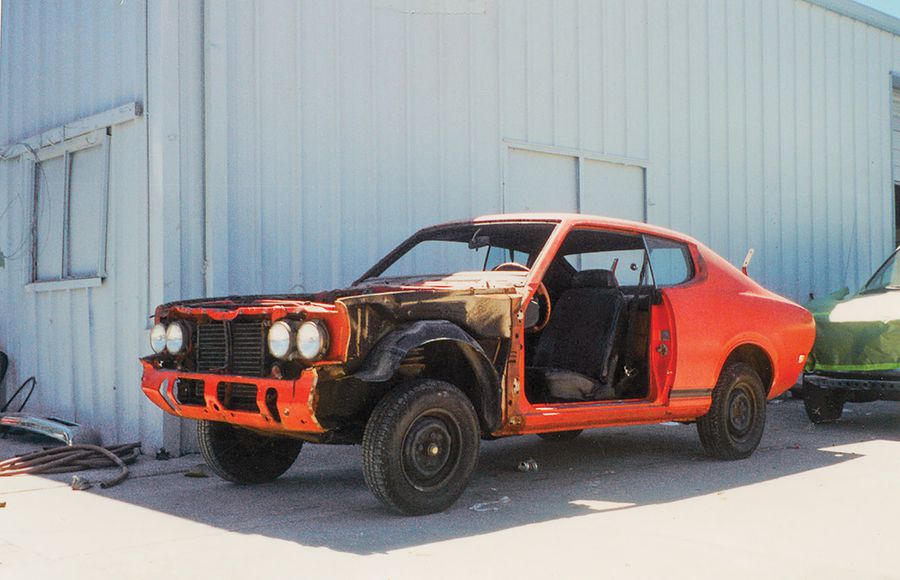
This was no simple spray bomb job: The lifesaving 610 was completely disassembled, its engine overhauled, and its body sanded down and prepped for three coats of single-stage PPG urethane. Many of the shabbier and broken pieces were discarded in favor of items scored in boneyards across the Southwest in the late '90s, but Bryan avoided the temptation of installing slimmer 1973-era, pre-5-mph bumpers for the sake of correctness.
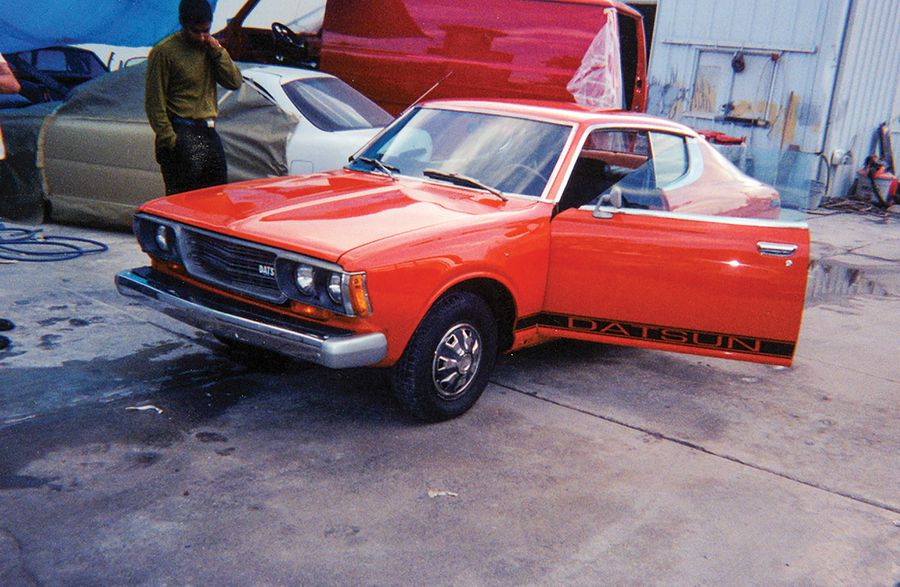
You can see the look on the guy's face: "You spent all this money to restore this car and you kept those hubcaps?"
Today, this 610 is no longer in Bryan's hands—although he knows where it is now, in similar condition to when he passed it along. Even so, it remains influential in his post-Nissan designs. And it remains influential within Nissan also—although it's a little startling to think that anything started with a car as unassuming as the 610. Yet it did.
Consider: Although Nissan had luxury cars at home, like the Cedric/Gloria twins and the President, the 610 was Datsun's largest available car in the North American market. Lessons learned from the 610 gave us the 810, which soon morphed into the Maxima. It was a hot seller—at an elevated price point—at a time when Japanese imports were "voluntarily" restricted, meaning that while fewer cars sold, they were more loaded up with luxury goodies at a higher price point so Nissan could still make its millions. All of this happened in the heart of the personal-luxury era and well into the '80s: even the Z-monikered sports car evolved into the ZX, which ladled on the comfort-minded accoutrements. By 1990, with the Datsun name exchanged for the corporate Nissan moniker, the company created an entire exclusive North American division, Infiniti, to sell plushest-of-the- plush Nissans.

It's a lot of history and growth to rest on the shoulders of one little rebadged Bluebird. But then again, so is saving someone's life.

Posted on: 2021/12/10 0:41
|
|
|
|
|
Re: Datsun Saves — one more revelation |
|
Moderator  
Joined:
2001/5/3 7:04
From 48 North
Group:
Registered Users
Contentmaster
Usermaster
|
one last thing ... That graphic is part of our Club homepage image  i wondered for years where the Homepage image came from i now see the various parts 1. red 2dr brochure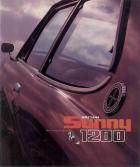 2. ??? blue background with curving lines .... World of Datsun maybe? 3. "script" badge 4. 1975? Datsun range brochure 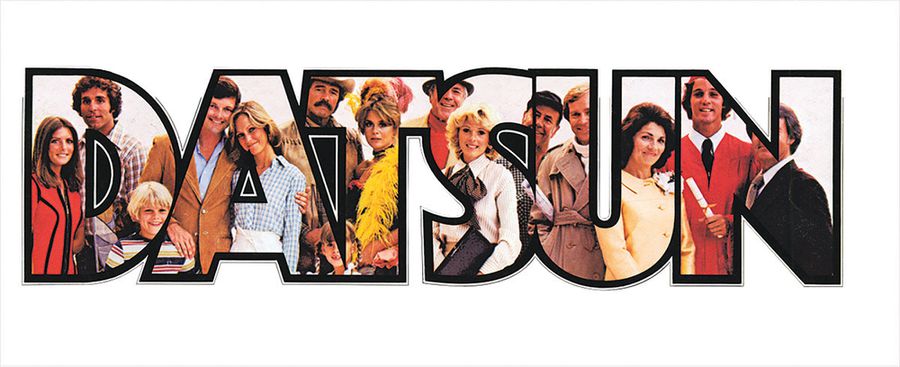
Posted on: 2021/12/11 9:50
|
|
|
You can view topic.
You cannot start a new topic.
You cannot reply to posts.
You cannot edit your posts.
You cannot delete your posts.
You cannot add new polls.
You cannot vote in polls.
You cannot attach files to posts.
You cannot post without approval.
|















 1975 Datsun 610.jpg (103.05 KB)
1975 Datsun 610.jpg (103.05 KB)
 Transfer
Transfer










